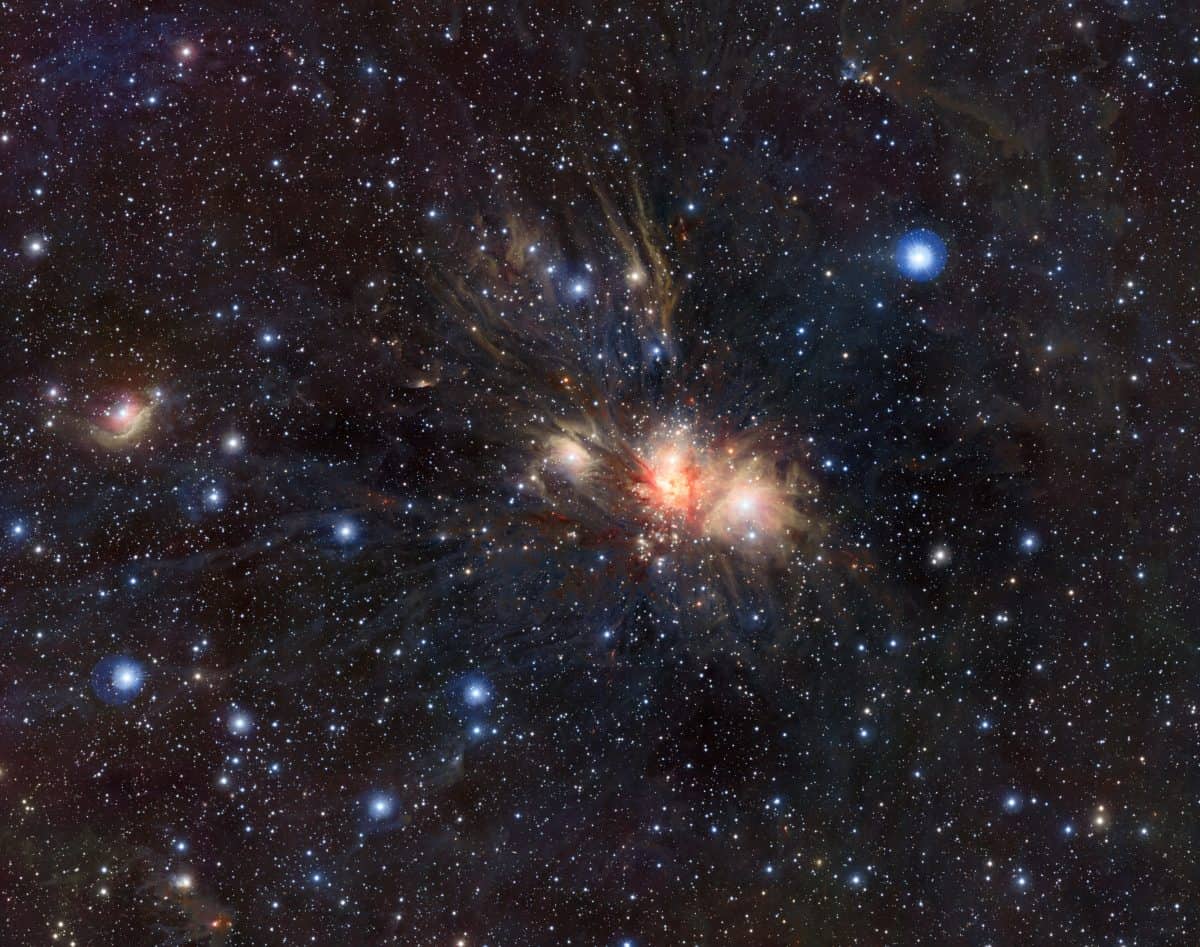The Cosmos with Monoceros R2
A new infrared image from ESO’s VISTA survey telescope reveals an extraordinary landscape of glowing tendrils of gas, dark clouds and young stars within the constellation of Monoceros (the Unicorn). This star-forming region, known as Monoceros R2, is embedded within a huge dark cloud. The region is almost completely obscured by interstellar dust when viewed in visible light, but is spectacular in the infrared.
An active stellar nursery lies hidden inside a massive dark cloud rich in molecules and dust in the constellation of Monoceros. Although it appears close in the sky to the more familiar Orion Nebula it is actually almost twice as far from Earth, at a distance of about 2700 light-years. In visible light a grouping of massive hot stars creates a beautiful collection of reflection nebulae where the bluish starlight is scattered from parts of the dark, foggy outer layers of the molecular cloud. However, most of the new-born massive stars remain hidden as the thick interstellar dust strongly absorbs their ultraviolet and visible light.
In this gorgeous infrared image taken from ESO’s Paranal Observatory in northern Chile, the Visible and Infrared Survey Telescope for Astronomy penetrates the dark curtain of cosmic dust and reveals in astonishing detail the folds, loops and filaments sculpted from the dusty interstellar matter by intense particle winds and the radiation emitted by hot young stars.
